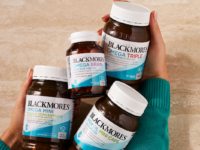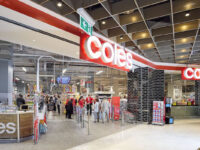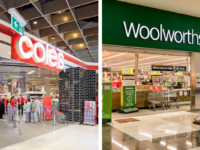 Woolworths plans to complete 80 per cent of its private label branding transition from select and homebrand to its essential and Woolworths labels by December, with CEO Brad Banducci revealing yesterday that 2,000 SKUs have already been transitioned.
Woolworths plans to complete 80 per cent of its private label branding transition from select and homebrand to its essential and Woolworths labels by December, with CEO Brad Banducci revealing yesterday that 2,000 SKUs have already been transitioned.
Describing the move as the “biggest rebranding exercise ever undertaken by a consumer company in Australia”, Banducci told shareholders on Wednesday afternoon that progress so far had been “remarkable”, and that the supermarket giant was doing much more than just changing the packaging.
“We’ve been trying to reformulate the product to make it healthier, wherever we can, [as well as] building up our Australian credentials and being very focused on making sure it’s at the right price point,” Banducci said.
Woolworths has committed to eliminating all artificial colours and preservatives from its own-brand products and is including the five-star health rating system on all packaging, without exception.
Banducci also said that inflation in fresh ranges impacted by cyclone Debbie earlier this year, such as Tomatoes and Capsicums, had begun to normalise, but that continued input pressures in meat that the supermarket giant has decided not to pass on were crimping margins in the category.
He signalled that Woolworths is looking to move away from fixing things within its supermarket business and towards constant improvement, signalling a shift away from decisions like the $1 billion-dollar investment in price and service last year to align itself better with competitors.
“Sledge hammer investment” is hopefully in the past, said Banducci, who asserted Woolies is now “much more into a thoughtful process of trying to understand what each customer segment wants”.
Promotions declined between 7 and 8 per cent during the year, with more than 3,500 SKUs on its EDLP program now, making the program just as big as its 3,800 weekly promotions.
“What we’d like to do is get into running our own race on this, we’ve been very reactive, [so] we’d like to get into running a strategy that’s right for our business, and our brand, and our customers.”
Investment in cost-of-doing-business initiatives, such as automated picking, rostering software, electricity efficiency and better product flow through the supply chain are expected to be focuses for the supermarket business in FY18, with material earnings benefits to be primarily realised in FY19-20. Increasing electricity prices are expected to have a material impact on CODB in FY18 though, with Banducci conceding that Woolies will likely be unable to fully offset soaring power prices.
Renewals progressed at a slightly slower rate than forecasted for the year, with 72 out of a total 80 accomplished, however an upgrade program – which involves addressing key issues in stores to meet minimum standards – was started and has proved popular, with 80 such investments taking place during FY17.
Woolworths is targeting circa 80 renewals for next year, at a cost of $4-5 million each, and at least 50 upgrades, which are generally less disruptive to trading. It will also trial its next generation format by the end of FY18.















